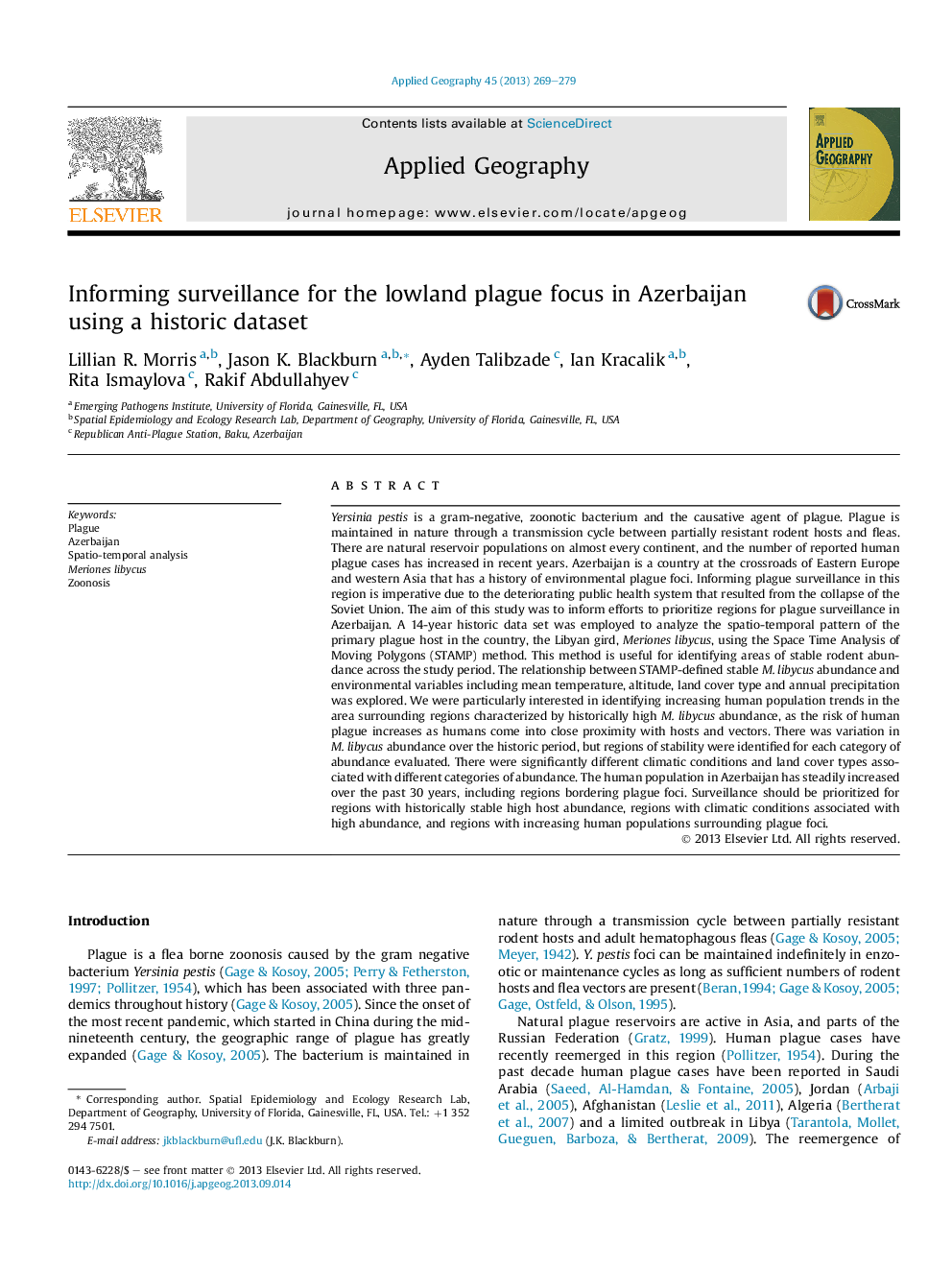| Article ID | Journal | Published Year | Pages | File Type |
|---|---|---|---|---|
| 6538809 | Applied Geography | 2013 | 11 Pages |
Abstract
Yersinia pestis is a gram-negative, zoonotic bacterium and the causative agent of plague. Plague is maintained in nature through a transmission cycle between partially resistant rodent hosts and fleas. There are natural reservoir populations on almost every continent, and the number of reported human plague cases has increased in recent years. Azerbaijan is a country at the crossroads of Eastern Europe and western Asia that has a history of environmental plague foci. Informing plague surveillance in this region is imperative due to the deteriorating public health system that resulted from the collapse of the Soviet Union. The aim of this study was to inform efforts to prioritize regions for plague surveillance in Azerbaijan. A 14-year historic data set was employed to analyze the spatio-temporal pattern of the primary plague host in the country, the Libyan gird, Meriones libycus, using the Space Time Analysis of Moving Polygons (STAMP) method. This method is useful for identifying areas of stable rodent abundance across the study period. The relationship between STAMP-defined stable M. libycus abundance and environmental variables including mean temperature, altitude, land cover type and annual precipitation was explored. We were particularly interested in identifying increasing human population trends in the area surrounding regions characterized by historically high M. libycus abundance, as the risk of human plague increases as humans come into close proximity with hosts and vectors. There was variation in M. libycus abundance over the historic period, but regions of stability were identified for each category of abundance evaluated. There were significantly different climatic conditions and land cover types associated with different categories of abundance. The human population in Azerbaijan has steadily increased over the past 30 years, including regions bordering plague foci. Surveillance should be prioritized for regions with historically stable high host abundance, regions with climatic conditions associated with high abundance, and regions with increasing human populations surrounding plague foci.
Related Topics
Life Sciences
Agricultural and Biological Sciences
Forestry
Authors
Lillian R. Morris, Jason K. Blackburn, Ayden Talibzade, Ian Kracalik, Rita Ismaylova, Rakif Abdullahyev,
